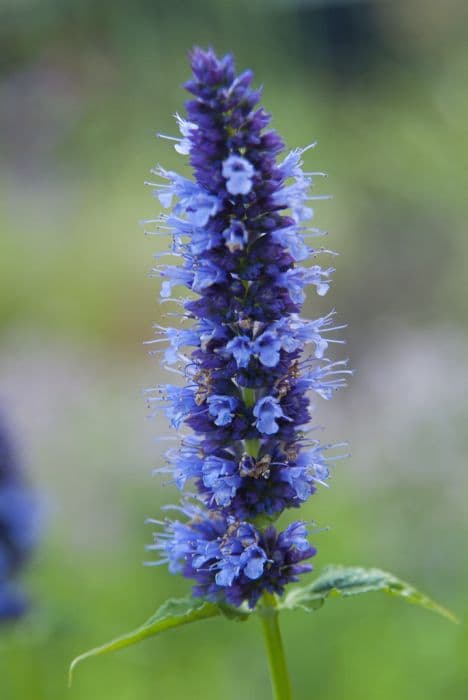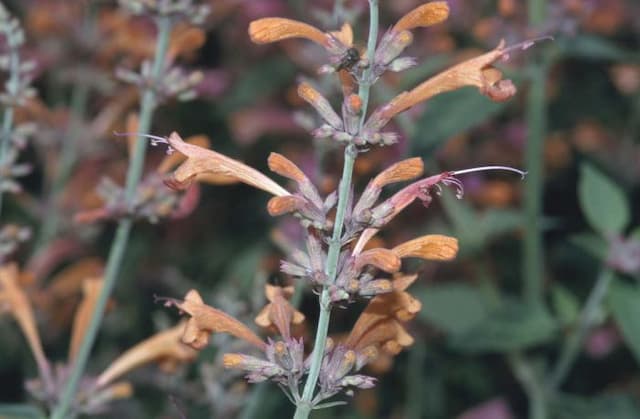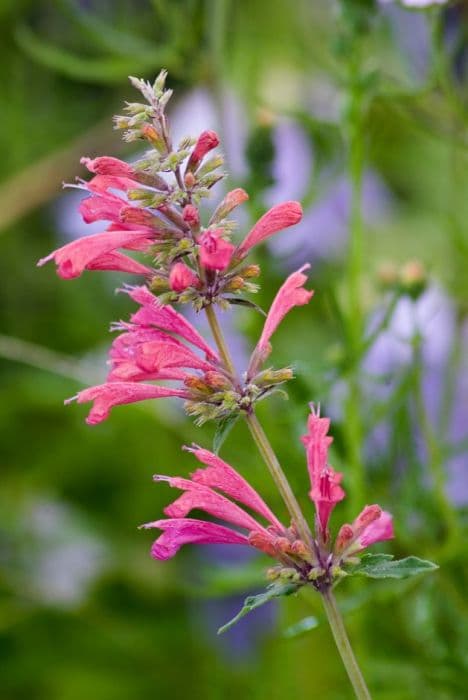Orange Scented Thyme Thymus 'Fragrantissimus'

ABOUT
Thymus 'Fragrantissimus', commonly known as Orange Scented Thyme, is a small, aromatic evergreen herb with a dense, mounding growth habit. The plant is characterized by its tiny, oval to almost linear leaves that are rich green in color. During the growing season, the foliage may be covered with fine hairs, giving it a slightly fuzzy appearance and a soft touch. This aromatic plant is celebrated for its delightful fragrance, which is reminiscent of a blend of thyme and orange zest, making it quite unique in the garden. Orange Scented Thyme produces small, tubular flowers that can range in color from pale lilac to pinkish-purple. These blooms are typically clustered in small whorls along the stems, adding a subtle splash of color to the plant while attracting beneficial insects such as bees. The flowers stand out against the green foliage, providing a charming contrast when in bloom. The stems of Orange Scented Thyme are slender and woody at the base, becoming more herbaceous and supple towards the tips. They often sprawl and spread gently over time, helping the plant to cover ground and fill in space around it. Overall, the appearance of Thymus 'Fragrantissimus' is delicate yet robust, with the plant emitting a pleasing aroma when the leaves are brushed or crushed, making it a favorite for sensory gardens and culinary use.
About this plant
 Names
NamesFamily
Lamiaceae
Synonyms
Orange-Scented Thyme, Fragrant Thyme
Common names
Thymus 'Fragrantissimus'.
 Toxicity
ToxicityTo humans
Orange scented thyme is generally considered safe for human consumption in culinary quantities and is not known to be toxic when consumed in the amounts typically used in food preparation. However, like any plant, if large quantities are ingested, or if an individual has specific allergies or sensitivities, adverse reactions could occur. Common symptoms might include gastrointestinal distress such as nausea, vomiting, or diarrhea. Essential oils in high concentrations could also be irritating to the skin or mucous membranes. Always exercise caution and consult with a healthcare professional if you have concerns about allergies or potential toxicity.
To pets
Orange scented thyme is generally not toxic to pets and is often used as a non-toxic ground cover that is safe for dogs and cats. However, as with any plant, it is possible for pets to have an allergic reaction or experience gastrointestinal upset if they consume large amounts of the plant. If you notice symptoms such as drooling, vomiting, or diarrhea after your pet has ingested a significant portion of the plant, it is recommended to consult with a veterinarian. In most cases, thyme is considered a safe herb for pets when consumed in small amounts.
 Characteristics
CharacteristicsLife cycle
Perennials
Foliage type
Evergreen
Color of leaves
Green
Flower color
Pink
Height
6-12 inches (15-30 cm)
Spread
12-18 inches (30-45 cm)
Plant type
Herb
Hardiness zones
5
Native area
Mediterranean
Benefits
 General Benefits
General Benefits- Aromatic Foliage: Thymus 'Fragrantissimus', commonly known as Orange Thyme, emits a pleasant citrus fragrance which can enhance the sensory experience of a garden or indoor space.
- Culinary Use: The leaves of Orange Thyme are edible and can be used to flavor a variety of dishes, especially in Mediterranean cuisine.
- Attracts Pollinators: The flowers of the plant attract bees and other pollinators, which is beneficial for the health of your garden and the environment.
- Drought Tolerance: Once established, Orange Thyme is quite drought-resistant, making it suitable for xeriscaping and low-water gardens.
- Groundcover: With its low-growing habit, it serves as an excellent groundcover, reducing weed growth and soil erosion.
- Easy to Grow: It is known for being easy to cultivate, requiring minimal care once established in the right conditions.
- Ornamental Qualities: Orange Thyme has an attractive growth pattern and, when in bloom, its tiny flowers add aesthetic value to garden spaces.
- Herb Garden Addition: It is a valuable addition to herb gardens, providing both aesthetic and functional benefits.
- Pest Repellent: Its aroma can naturally repel certain pests, thus helping to protect other plants in the vicinity.
 Medical Properties
Medical Properties- Antiseptic: Thymus 'Fragrantissimus' oil has been used for its antiseptic properties.
- Antibacterial: It may help in inhibiting bacterial growth.
- Antifungal: The plant contains compounds that can combat fungal infections.
- Antispasmodic: May relieve spasms in the muscles.
- Expectorant: Can help in expelling mucus from the throat or lungs.
- Antitussive: May suppress coughing.
- Carminative: Could relieve flatulence.
- Emmenagogue: Historically used to promote menstrual flow.
- Antioxidant: Contains compounds that might protect cells from oxidative damage.
 Air-purifying Qualities
Air-purifying QualitiesThis plant is not specifically known for air purifying qualities.
 Other Uses
Other Uses- Culinary Accent: Thymus 'Fragrantissimus', also known as Orange Thyme, can be infused into sugar, creating a subtly flavored sweetener for teas, baked goods, and cocktails.
- Moth Repellent: The dried leaves and flowers of Orange Thyme can be used in sachets to repel moths from wardrobes and drawers.
- Plant Dye: Orange Thyme can be boiled to produce a natural dye for textiles, offering a range of colors from green to brown, depending on the mordant used.
- Aromatherapy: The plant's leaves, when dried and included in potpourri, release a citrusy scent that can help freshen up living spaces.
- Crafts: Fresh or dried sprigs of Orange Thyme can be incorporated into wreaths and floral arrangements for fragrance and aesthetic appeal.
- Linen Freshener: Small pouches filled with dried Orange Thyme leaves can be tucked into linen closets to impart a pleasant aroma on bedding and towels.
- Garden Insect Repellant: Planting Orange Thyme in the garden can help repel certain pests due to its strong scent, naturally protecting nearby plants.
- Decorative Mulch: Dried Orange Thyme can be used as a decorative and fragrant mulch for small planters and indoor pots.
- Natural carpet freshener: Sprinkled and then vacuumed up, dried, crushed Orange Thyme leaves can deodorize carpets naturally.
- Animal Bedding: Some pet owners use dried Orange Thyme in small quantities as a fragrant addition to pet bedding, especially for animals that appreciate herbal scents.
Interesting Facts
 Feng Shui
Feng ShuiThe plant Orange-Scented Thyme is not used in Feng Shui practice.
 Zodiac Sign Compitability
Zodiac Sign CompitabilityOrange-Scented Thyme is not used in astrology practice.
 Plant Symbolism
Plant Symbolism- Courage and Bravery - Historically, Thymus 'Fragrantissimus', commonly known as Orange Scented Thyme, has been associated with courage and bravery. In ancient times, knights would often carry sprigs of thyme as a sign of their strength and valor in battles.
- Healing and Purification - Orange Scented Thyme has medicinal properties and has long been used in herbal remedies and aromatherapy. Its symbolic connection to healing reflects its use in traditional medicine to purify the body and mind.
- Passage and Transition - In several cultures, thyme is used to symbolize the passage of time and life transitions, perhaps due to its perennial nature and the persistent fragrance that suggests permanence and enduring qualities.
- Peace and Serenity - The pleasant aroma of Orange Scented Thyme is often thought to induce a sense of calm and tranquility, making it a symbol of peace and an aid in soothing tensions.
- Affection and Remembrance - Giving someone a sprig of thyme can represent affection or serve as a reminder of a person or a memory, possibly because its scent lingers and can evoke remembrance when encountered again.
 Water
WaterOrange scented thyme should be watered deeply whenever the top inch of soil feels dry to the touch, which typically means once or twice a week depending on climate conditions. Avoid overhead watering to help prevent fungal diseases and instead use a drip system or water at the base of the plant. Approximately 1 gallon of water per plant should be sufficient each time you water, ensuring even soil moisture. During hot, dry spells, you may need to water more frequently, while during rainy periods or cooler weather, less frequent watering is necessary. Be careful not to overwater, as thyme prefers drier conditions and is drought-tolerant once established.
 Light
LightOrange scented thyme thrives best in full sun conditions where it can receive at least six hours of direct sunlight each day. A south-facing spot is ideal for maximum exposure. In regions with very hot summers, light afternoon shade can be beneficial to prevent scorching.
 Temperature
TemperatureOrange scented thyme performs well in a wide range of temperature conditions and can tolerate a minimum temperature of about 10° Fahrenheit, though it thrives in temperatures between 60° and 80° Fahrenheit. The plant is generally hardy up to USDA zones 5 through 9, withstanding a maximum temperature of around 90° Fahrenheit without stress.
 Pruning
PruningOrange scented thyme should be pruned to encourage bushiness and to remove any woody, non-productive stems. Light pruning can be done in the spring and after flowering to maintain shape and size. It's recommended to prune or trim lightly immediately after the first flush of flowers to promote a second blooming and to prevent the plant from becoming too leggy. Pruning can also be done in early spring before new growth begins.
 Cleaning
CleaningAs needed
 Soil
SoilOrange Thyme requires well-draining soil with a pH between 6.0 and 8.0. To create the best soil mix, combine two parts potting soil, one part perlite, and one part sand, ensuring good aeration and drainage suitable for this Mediterranean herb.
 Repotting
RepottingOrange Thyme does not require frequent repotting and can be repotted every 2-3 years or when it outgrows its container, ensuring its root system remains healthy and not overcrowded.
 Humidity & Misting
Humidity & MistingOrange Thyme prefers a dry to moderate humidity level, mimicking its natural Mediterranean habitat. It thrives in typical household humidity levels without the need for additional humidity.
 Suitable locations
Suitable locationsIndoor
Place in sunny spot, minimal water, well-draining soil.
Outdoor
Full sun, well-drained soil, little water, hardy.
Hardiness zone
5-9 USDA
 Life cycle
Life cycleThe life of Thymus 'Fragrantissimus', commonly known as Orange Scented Thyme, begins with the germination of seeds, which requires a warm temperature and light for successful sprouting. Following germination, the seedlings grow and develop into young plants, establishing a root system and foliage through vegetative growth. During spring and summer, Orange Scented Thyme enters its reproductive phase, producing clusters of small, fragrant flowers that attract pollinators and set seed for future generations. After pollination, the plant's flowers develop into tiny, dry fruits containing seeds that can disperse into the environment to begin a new life cycle. Throughout the year, this perennial herb will undergo phases of active growth and dormancy, with the above-ground foliage dying back in harsh winters but regrowing from the roots in the following spring. With proper care, Thymus 'Fragrantissimus' can live and thrive for several years, contributing its aromatic leaves to culinary and medicinal uses.
 Propogation
PropogationPropogation time
Spring to Early Summer
The most popular method of propagation for Thymus 'Fragrantissimus', commonly known as Orange Scented Thyme, is through softwood cuttings. This is best done in late spring or early summer when the plant's growth is most vigorous. To propagate, one cuts a 3 to 5-inch (about 7.6 to 12.7 centimeters) long stem from the non-flowering parts of the plant, making sure to include several leaf nodes. The lower leaves are removed, and the cut end is dipped in rooting hormone to encourage root growth. The cutting is then planted in a well-draining soil mix and kept moist until roots develop, which typically takes a few weeks. During this time, it is essential to provide bright, indirect light and to ensure the propagation medium remains damp but not waterlogged to prevent rot.






![Bugle [Sugar Plum]](/_next/image?url=https%3A%2F%2Fplants-admin.emdemapps.com%2Fimages%2Fplants%2F%2Fimages%2F604b597956a55.png&w=640&q=75)
![Bugle [Princess Nadia]](/_next/image?url=https%3A%2F%2Fplants-admin.emdemapps.com%2Fimages%2Fplants%2F%2Fimages%2F604b5806e268c.png&w=640&q=75)

